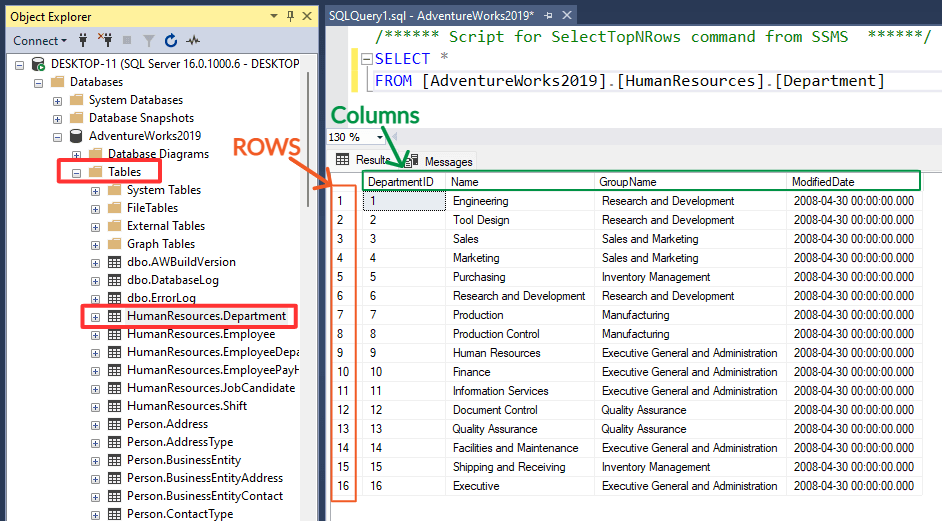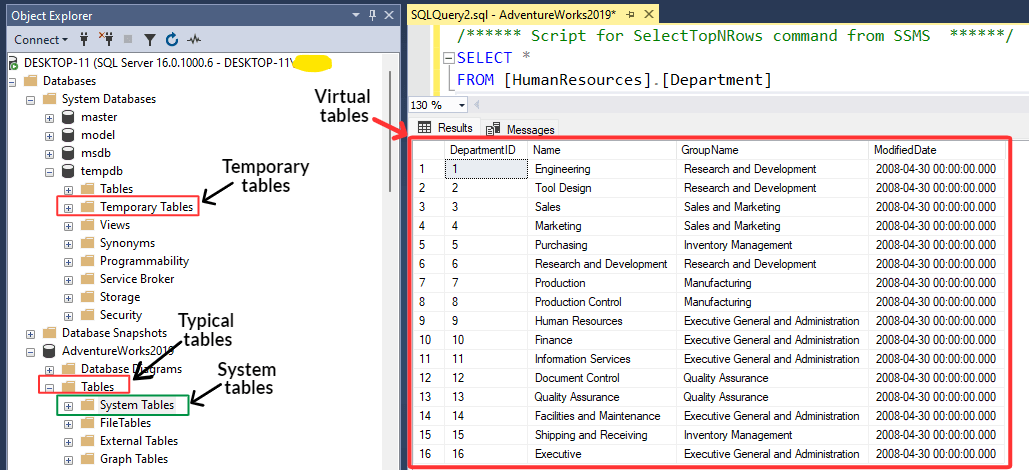Text copied!
SQL Tables
SQL table is a database object that organize and stores data in a structured manner. It uses rows and columns to organize data, where each row represents a unique record and each column represents a specific data field.
Here is an example of SQL table called [Department] that contains information about department in a company :
SELECT * FROM [Department];

There are several types of SQL tables that can be used to store data, including :

1. Typical tables :
In SQL, typical tables are created by the user to store data in the database.
2. Temporary tables :
Temporary tables are created to store data temporarily during the execution of a query and are automatically deleted when the session ends.
There are two types of Temporary tables :
[a] Local temporary table :
Local temporary tables are only visible to the session that created them and are dropped automatically when the session ends. To create it, place single hash (#) before the table name. Here's an example :
CREATE TABLE #LocalTemporaryTable (
[ID] INT
);
[b] Global temporary table :
Global temporary tables are accessible to all sessions, but they are dropped automatically when the session that created them ends. To create it, place double hash (##) before the table name. Here's an example :
CREATE TABLE ##GlobalTemporaryTable (
[ID] INT
);
3. System tables :
System tables are used by the database management system to store metadata or information about the database itself. These tables contain information about the structure of the database such as table names, column names, indexes, constraints and data types.
System tables are typically read-only which means that users can't modify their contents directly.
4. Virtual tables :
Virtual tables is the type of tables that does not actually exist in the database as a physical table, but rather is created dynamically based on the results of a "SELECT statement" or a "view".